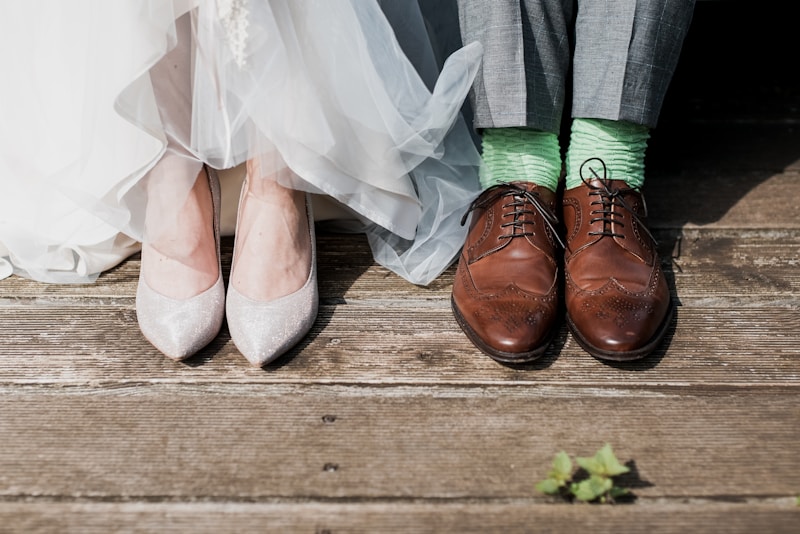The Art of Layering in Wedding Gown Designs: Elevate Your Bridal Look
The Art of Layering in Wedding Gown Designs: Elevate Your Bridal Look
When it comes to wedding dress designs, one trend stands out for its elegance and versatility: layering. The art of layering in wedding gown designs enhances not only the visual appeal but also creates a distinct silhouette that can suit a variety of body types and personal styles. In this article, we will explore the different aspects of layering in wedding gowns, the benefits it provides, and tips for choosing the perfect layered gown for your big day.
Understanding Layering in Wedding Gown Designs
Layering involves combining different fabrics, textures, and colors to create depth and dimension in a wedding gown. This technique can be applied in numerous ways, from the classic addition of a voluminous skirt overlay to using lace or tulle to introduce intricate details. Here are some popular types of layering in wedding gown designs:
| Type of Layering | Description |
| Skirt Layers | Multiple layers of fabric to create a fuller skirt, often using organza, tulle, or chiffon. |
| Train Layers | Extending layers at the back of the gown, often resulting in a dramatic train effect. |
| Overlay Details | Adding lace, satin or beaded overlays on top of a solid dress for texture and depth. |
| Mixed Fabrics | Combining different materials to enrich the overall look, such as silk with satin or lace. |
The Benefits of Layering in Wedding Gown Designs
Layering not only enhances the aesthetic appeal of a wedding gown but also comes with various benefits:
- Versatility: Layering allows brides to customize their look—from a simple ceremony to a grand reception—by adding or removing layers as needed.
- Flattering Fit: Layers can help contour the body and create a more flattering shape for different body types.
- Texture and Depth: Mixing fabrics and materials adds interest and dimension to a gown, making it visually captivating.
- Unique Styles: Brides can create individualized looks that reflect their personalities and preferences through various layering techniques.

Popular Wedding Gown Layering Techniques
To fully appreciate the art of layering, it’s essential to understand the popular techniques brides can choose when selecting their wedding gown. Here are some noteworthy layering techniques:
1. Peplum Layers
Peplum layers, which flare out at the waist, create an hourglass silhouette that can enhance the bride's curves. Peplum skirts can be made from various fabrics like lace, tulle, or satin to add a unique flair and dimension to the gown.
2. High-Low Hemlines
A high-low hemline is a modern take on wedding gowns, where the front is shorter than the back. This layering technique gives brides the opportunity to showcase their shoes while still incorporating a flowing train for a dramatic effect.
3. Layered Sleeves
Whether it's sheer lace, dramatic bell sleeves, or off-the-shoulder looks, layered sleeves can add a sophisticated vibe to a wedding gown. They create movement and elegance, making any bride feel regal on her special day.
4. Tulle Overlays
Tulle is a favorite for bridal gowns because of its lightweight and soft texture. Adding tulle overlays allows brides to achieve a romantic look while also providing volume without excess weight.
Choosing the Right Layered Wedding Gown
With so many options for layering, selecting the perfect gown can be overwhelming. Here are some tips to help you find the ideal layered wedding dress for your big day:
- Consider Your Venue: The style of your wedding venue should play a significant role in your gown selection. For an outdoor wedding, lightweight layers such as chiffon or tulle may work best, while a formal ballroom could accommodate heavier fabrics.
- Know Your Body Type: Different layering techniques flatter different body types. Consider what works best for you—empire waist with flowing layers or more structured styles that highlight your waist.
- Try Before You Buy: Always try on gowns with various layering styles. Be open to different fabrics and designs that may surprise you when you see them on your body.
- Focus on Comfort: While it's essential to look fabulous, your comfort is paramount. Ensure that your gown allows you to move freely and dance the night away!
Popular Designers Known for Layering Techniques
Many top bridal designers have made their mark with stunning layered designs. Here are a few noteworthy names to consider if you are looking for inspiration:
- Vera Wang: Known for her fashion-forward designs, Vera Wang’s gowns often feature bold layering techniques that create modern elegance.
- Monique Lhuillier: With romantic silhouettes and intricate layering, her gowns are a favorite for their craftsmanship and unique styles.
- Jenny Packham: Known for her vintage-inspired gowns, Jenny Packham incorporates layering seamlessly into her designs, creating dreamy looks.
Conclusion: Embrace the Art of Layering in Your Bridal Look
The art of layering in wedding gown designs is a beautiful way to express individuality while enhancing the overall aesthetic of your bridal look. From romantic tulle overlays to structured layers that flatter your figure, this technique offers countless possibilities. As you embark on your journey to find the perfect wedding gown, keep in mind the various layering techniques, designers, and tips mentioned above. Remember to choose a dress that completes your personal style and makes you feel confident and radiant on your special day.
Suggestions and Final Thoughts
As you prepare to walk down the aisle, remember these key points: prioritize comfort and personal style, consider your venue, and embrace the layering techniques that resonate with you. Whether you envision yourself in a modern layered design or a classic gown with delicate overlays, the perfect wedding gown is waiting for you. Happy gown hunting!
